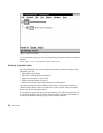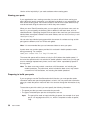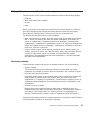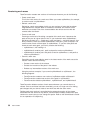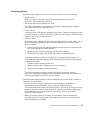Use the online help facility if you need assistance when creating parts.
Naming your parts
If your organization has a naming convention, be sure to follow it when naming your
parts. When the naming convention is not followed, everybody in your organization can
have trouble locating parts. Part names created on the server are case-sensitive; they
must be retrieved using the same case in which they were created.
When you name TeamConnection parts, you can specify only the base name, such as
hand.c, or you can specify the directory path in addition to the base name, such as
robot\hand\hand.c. Specifying the path name as part of the name lets you have several
identical base name parts included in the same release, such as robot\hand\msg.h and
robot\optics\msg.h.
You can also have identical part names within the context of a release as long as their
part types are different, such as TCPart and vgdata.
Note: It is recommended that you use lowercase letters to name your parts.
A parts name may contain spaces provided it is enclosed in double quotation marks
during processing. For example:
teamc part -create "This is a long file name.txt"
The name with spaces will be shown as-is by the GUI (without the double quotes). If
the name has spaces and is not enclosed in double quotation marks, then you may get
an error message repeated many times, one for each ″token″ separated by spaces in
the long name.
Note: The base name may contain a maximum of 63 characters, not including the
double quotations. The path name, which includes the base name, may contain
a maximum of 195 characters, not including the double quotations.
Preparing to build your parts
If you are going to use the TeamConnection build function, you must provide certain
information about each part that participates in a build. You can provide this information
when you create the parts or wait until later. You can also change the information at any
time.
To associate a part with a build, you must specify the following information:
v The parent part that you want to associate the part with.
v The type of relationship the part has to the parent, such as:
Input The part will be used as input to building its parent. An example of an input
part is a C language source file, x.c, which is compiled to create its parent,
x.obj.
30 User’s Guide







